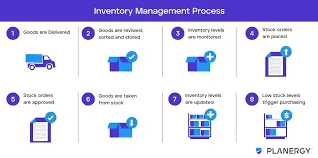Inventory management is the process of monitoring and controlling stock levels to ensure businesses have the right products available at the right time. Poor inventory management can result in stockouts, overstocking, or waste. Below are eight techniques businesses can adopt to improve efficiency and meet customer demands.
1. Just-in-Time (JIT) Inventory
The JIT method involves ordering stock only when it is needed, reducing storage costs and waste. Businesses that use JIT rely on accurate demand forecasting to ensure products arrive just in time for sale or production.
2. ABC Analysis
ABC analysis helps businesses categorize inventory based on its importance. Category A items are high-value products with low sales volume, while category C items are low-value products with high sales volume. This technique allows businesses to focus more attention on critical items.
3. First-In, First-Out (FIFO)
The FIFO method ensures that older inventory is sold before newer stock. This technique is especially useful for businesses dealing with perishable goods, such as food and medicine, to prevent waste and loss.
4. Cycle Counting
Cycle counting involves regularly checking a portion of the inventory to ensure accuracy without shutting down operations. This technique helps identify discrepancies early and keeps stock levels accurate throughout the year.
5. Demand Forecasting
Predicting customer demand ensures businesses maintain optimal stock levels. Demand forecasting tools use historical sales data, market trends, and seasonality to estimate future demand. This helps prevent stockouts or overstocking.
6. Vendor-Managed Inventory (VMI)
With VMI, suppliers monitor and replenish stock on behalf of the business. This reduces the burden on businesses and ensures a smooth flow of goods. It also strengthens supplier relationships and improves inventory accuracy.
7. Batch Tracking
Batch tracking helps businesses monitor specific product batches from production to sale. This technique is essential for industries like food and pharmaceuticals, where tracking expiration dates and managing recalls is critical.
8. Safety Stock
Safety stock is extra inventory kept on hand to protect against unexpected demand spikes or supply chain disruptions. Having safety stock prevents lost sales and ensures customer satisfaction during emergencies.
Using these techniques, businesses can maintain the right inventory levels, minimize losses, and improve customer service. Efficient inventory management ensures smooth operations and boosts profitability.























